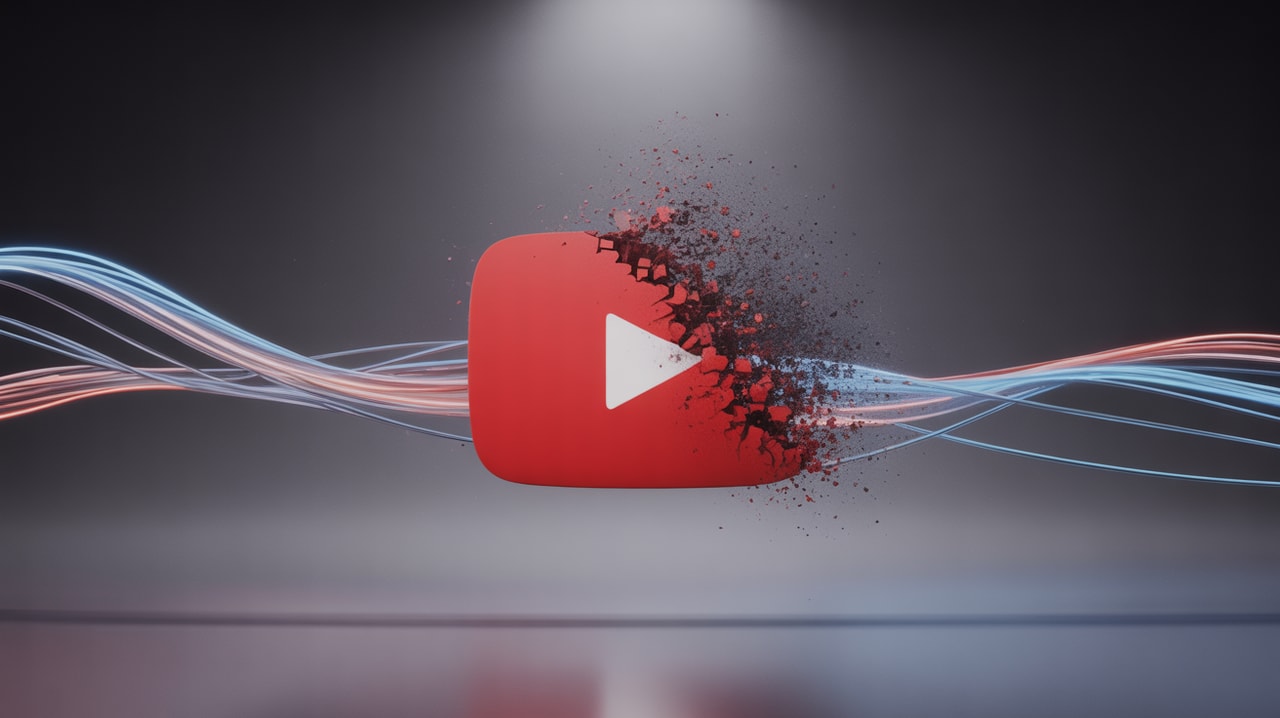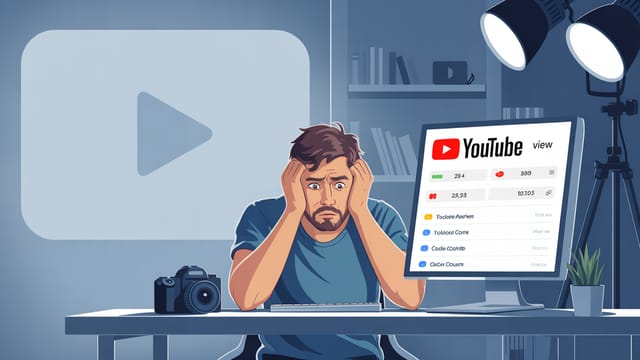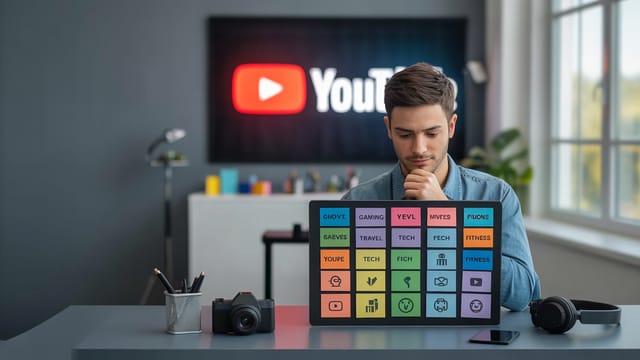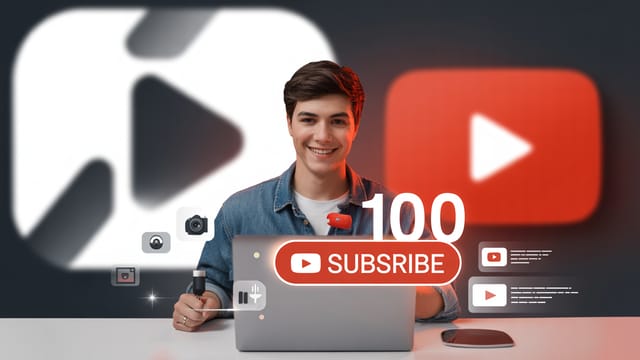
Ready to get your next 10,000 subscribers?
Join thousands of creators who use Subscribr to create faster, better YouTube videos.
Is YouTube SEO Dead? What Truly Matters for Views in 2025
For years, creators have been told that mastering YouTube SEO is the key to unlocking views and subscribers. Stuffing keywords into titles, descriptions, and tags was the gospel. But as 2025 unfolds, you might be asking: Is YouTube SEO still relevant, or is it just another outdated tactic?
The truth is, the landscape has shifted dramatically. While the concept of optimizing your content for discoverability remains crucial, the methods have evolved far beyond simple keyword manipulation. Relying solely on old-school SEO tactics is like trying to win a race with a horse and buggy in the age of sports cars.
This article will cut through the confusion, clarify the role of optimization in 2025, and reveal the modern strategies established creators need to master for real growth and discoverability.
The Evolving YouTube Algorithm: Beyond Just Keywords
One of the biggest sources of confusion for creators is keeping pace with YouTube algorithm updates and their impact on SEO. The algorithm isn't a static entity; it's a dynamic, learning system constantly working to understand what viewers want and connect them with videos they'll love.
In 2025, the algorithm is more sophisticated than ever. It's powered by advanced machine learning models, including Large Language Models (LLMs) similar to those behind generative AI. What does this mean for you? As insights from YouTube strategists highlight, the algorithm is now much better at understanding the nuanced aspects of your video content.
Instead of just recognizing that a video is about "cooking," it can understand specific ingredients, techniques, and even the style of cooking (e.g., "beginner-friendly Italian pasta recipes"). This enhanced understanding allows for more precise recommendations, connecting your specific content with the right viewers who are most likely to engage with it. This is a significant shift: the focus is less on simply matching keywords and more on matching content to specific viewer interests and intent.
Why Traditional SEO Isn't Enough (and What Replaced Tags)
The confusion over the relevance and optimal use of video tags is a major pain point for many. You might still be spending valuable time researching and adding dozens of tags, hoping they'll magically boost your rankings.
Here's the hard truth: In 2025, tags have significantly decreased in importance for YouTube video SEO. While the feature still exists, their impact on discoverability and ranking is minimal. As one strategy expert put it, "Do not spend a lot of time on tags. Their effect is so minute that extensive effort is not warranted." If you use them at all, a quick method is to use a tool to suggest a few relevant terms, but don't obsess over them.
So, if traditional tags and keyword stuffing are out, what's in? The algorithm now prioritizes audience signals and content quality above all else. It's less about what keywords you tell YouTube your video is about, and more about how viewers actually interact with your content.
The New Pillars of Discoverability in 2025
To thrive on YouTube in 2025, your strategy must be built on pillars that reflect the algorithm's current priorities.
1. Audience-First Content Strategy
This is the foundation. Your content must be created with a specific viewer in mind, addressing their needs, interests, and pain points. Instead of making videos you hope people will search for, focus on creating videos that genuinely resonate with your target audience.
Understanding your audience deeply allows you to create content that not only attracts clicks but keeps viewers watching. Tools like Subscribr's AI Script Writer can help by guiding you through the research and outlining phases, ensuring your content is structured to keep viewers engaged from the hook to the conclusion. By analyzing successful channels and videos in your niche using Subscribr's Channel and Video Intel, you can identify content formats and topics that have already proven to resonate with similar audiences.
2. Engagement and Retention: The Real Ranking Factors
Click-Through Rate (CTR) and Average View Duration (AVD) are paramount. A high CTR tells YouTube that your title and thumbnail are compelling enough to make viewers click when they see it. A high AVD tells YouTube that your content is engaging and satisfying, keeping viewers watching for a significant portion of the video.
Other engagement metrics like likes, comments, shares, and even viewer sentiment (which LLMs can help the algorithm understand) also play a role. These signals tell YouTube that your content is providing value and satisfying viewer intent.
Consider channels like @BranchEducation (2.39M subscribers) in the tech education niche. Their videos, while educational, often maintain strong engagement, contributing to a VS ratio of 0.82. This suggests viewers aren't just clicking; they're staying and watching. Similarly, channels like @Teacher's Tech (1.04M subscribers) with a VS ratio of 0.19 demonstrate consistent viewership relative to their subscriber count, likely due to their focus on practical, engaging tech tutorials.
Highly engaging videos often stand out. For instance, a tech tutorial video titled "94% in EXAMS using AI" by @100x Engineers (620k views, 24k likes, 9.6 outlier score) shows exceptional performance compared to the channel's average, indicating strong viewer interest and engagement driven by a compelling topic and effective execution. Another example, "How to learn to code FAST using ChatGPT (it's a game changer seriously)" by @Tina Huang (2.3M views, 83k likes, 5.0 outlier score), highlights how addressing a specific, high-interest problem with a popular tool like ChatGPT can drive massive engagement and discoverability, far beyond traditional keyword optimization.
3. Building Topic Authority
YouTube wants to recommend content from creators who are experts or authoritative sources on a topic. Consistently creating high-quality, valuable content within a specific niche signals to the algorithm that your channel is a reliable resource.
This isn't about getting a badge; it's about demonstrating expertise through the quality and consistency of your uploads and the positive reception from your audience. Channels that build strong topic authority are more likely to be recommended by the algorithm to viewers interested in that subject matter, regardless of specific keyword matches in their metadata.
Look at channels in the business strategy space. @THE SECRET SAUCE (1.29M subscribers) consistently produces educational content about business, achieving a VS ratio of 0.11. Similarly, @Logically Answered (722k subscribers) with a VS ratio of 0.21 and @Dr. Indrawan Nugroho (1.08M subscribers) with a VS ratio of 0.15 all demonstrate consistent performance by focusing on specific business analysis and strategy topics. Their consistent output and related viewership help establish them as authorities in their respective niches.
4. Understanding Viewer Intent (Beyond Keywords)
With the help of LLMs, the algorithm is better equipped to understand the intent behind a viewer's search or browsing behavior. It's not just about matching the exact words typed; it's about understanding the underlying need or question.
This means your content needs to genuinely solve the problem or satisfy the curiosity that a viewer has. Your titles and thumbnails should clearly communicate the value the viewer will receive by watching, aligning with their likely intent.
For instance, a video titled "Master ChatGPT in 5 Minutes" by Futurepedia (896k views, 37k likes, 1.8 outlier score) clearly promises a quick solution to a popular need (learning ChatGPT), directly addressing viewer intent for efficient learning. Similarly, "What Is Strategy? It’s a Lot Simpler Than You Think" by @Harvard Business Review (1.2M views, 28k likes, 7.4 outlier score) targets viewers confused by business strategy, promising simplification and clarity. These titles resonate because they speak directly to what the viewer wants to learn or achieve.
Actionable Strategies for Established Creators in 2025
So, how do you practically implement these modern strategies?
1. Analyze What's Working (and Why)
Stop guessing. Use data to understand what resonates with your audience and in your niche. This is where concepts like outlier theory become invaluable – identifying videos that perform significantly better than your channel's average.
Subscribr's Intel feature and Research Assistant are designed for this. You can analyze your own channel's performance metrics, identify videos with high outlier scores, and then use the Video Breakdown Tool to understand the structure, hook, and content of those high-performing videos. You can also analyze competitors using Subscribr's Competitive Analysis tools to study top-performing videos in your niche and identify successful patterns and content gaps you can leverage. This data-driven approach helps overcome the confusion about what strategies are currently effective.
2. Focus on Compelling Hooks and Content Quality
The first 15-30 seconds of your video are critical for retention. A strong hook grabs attention and sets the expectation. The rest of your content must deliver on that promise, keeping viewers engaged through pacing, storytelling, and valuable information.
Instead of asking "How do I stuff more keywords?", ask "How do I make this video so compelling that viewers have to watch it all the way through?" Subscribr's Script Building Pipeline helps you structure your content with strong hooks and logical flow. The Hook Creation Tools specifically generate compelling introductions designed to maximize viewer retention from the start.
3. Craft Titles and Thumbnails for Maximum Click-Through Rate (CTR)
Your title and thumbnail are your video's advertisement. Their primary job is to entice the right viewer to click. This involves more than just including keywords; it requires understanding viewer psychology, creating curiosity, and clearly communicating the video's value and topic.
Analyze successful thumbnails in your niche using Subscribr's Thumbnail Style Analysis to understand visual trends. Use Subscribr's AI Script Writer which assists in creating optimized titles and descriptions that are designed for both algorithmic performance and human engagement, ensuring they accurately reflect your content and appeal to your target audience.
4. Build Authority Through Consistent, High-Value Content
Regularly publishing high-quality content in your niche is the best way to build topic authority. This signals to YouTube that you are an active, reliable source of information on that subject.
Focus on becoming the go-to channel for a specific type of content or audience. The more consistently you deliver value, the stronger your authority becomes. Subscribr's Channel Management System and Workflow Management tools can help you maintain a consistent publishing schedule by streamlining your content creation process, ensuring you can produce high-quality videos regularly without burnout.
5. Leverage AI Tools (Wisely)
AI is not a replacement for strategic thinking or creativity, but it can be a powerful assistant. AI tools can help with brainstorming, research, scripting, and even analyzing data.
As seen in the video by @100x Engineers demonstrating AI-assisted exam success, AI can be integrated into various processes. For creators, tools like Subscribr's AI Chat & Research Assistant allow you to conduct research, brainstorm ideas, and even generate script drafts conversationally, significantly speeding up the content creation process. This helps you stay agile and responsive to trends without sacrificing quality.
Future Trends: What's Next for Discoverability?
Looking ahead to the rest of 2025 and beyond, the algorithm will likely continue to leverage advanced AI to understand content and viewer behavior even more deeply. Expect a continued emphasis on authentic engagement, viewer satisfaction, and the ability of content to keep viewers on the platform.
The rise of short-form content and the blurring lines between different content formats mean that discoverability will be influenced by performance across Shorts, long-form, and potentially other new formats. Recency and the ability to tap into current events and trends will remain crucial for certain types of content, allowing creators to quickly get in front of interested viewers.
The core principle remains: create valuable, engaging content that resonates with a specific audience. The algorithm will get better and better at finding the right viewers for your specific content, provided you give it the right signals through audience satisfaction and engagement.
Conclusion: SEO Isn't Dead, It's Evolved
Is YouTube SEO dead in 2025? Absolutely not. But it has evolved from a keyword game to a sophisticated system that prioritizes audience behavior, content quality, and topic authority.
To succeed, established creators need to move beyond outdated tactics like keyword stuffing and focus on:
- Creating audience-first content that provides real value.
- Maximizing engagement and retention through compelling hooks and structure.
- Building authority in a specific niche through consistent, high-quality uploads.
- Understanding and targeting viewer intent rather than just keywords.
- Leveraging modern tools and analytics to inform strategy.
By embracing these principles and utilizing platforms designed for the modern YouTube landscape, like Subscribr, you can navigate the algorithm, increase your discoverability, and achieve sustainable growth in 2025 and beyond. Stop chasing keywords and start focusing on creating content that your audience — and the algorithm — will love. This is the true path to unlocking views and establishing yourself as a thought leader in your niche.





